
Nepal measures about 880 kilometers (547 mi) along its Himalayan axis by 150 to 250 kilometers across. It has an area of 147,516 km2 (56,956 sq mi).

The Himalayas, or Himalaya, is a mountain range in Asia, separating the plains of the Indian subcontinent from the Tibetan Plateau. The range has some of the Earth's highest peaks, including the highest, Mount Everest; more than 100 peaks exceeding elevations of 7,200 m (23,600 ft) above sea level lie in the Himalayas.

Environmental degradation is the deterioration of the environment through depletion of resources such as quality of air, water and soil; the destruction of ecosystems; habitat destruction; the extinction of wildlife; and pollution. It is defined as any change or disturbance to the environment perceived to be deleterious or undesirable. Environmental degradation process amplify the impact of environmental issues leave lasting impacts on the environment.

Environmental issues in Afghanistan are monitored by the National Environmental Protection Agency (NEPA). They predate the political turmoil of the past few decades. Forests have been depleted by centuries of grazing and farming, practices which have only increased with modern population growth.

Environmentally, Colombia is a mega-diverse country from its natural land terrain to its biological wildlife. Its biodiversity is a result of its geographical location and elevation. It is the fourth largest South American country and only country in South America to have coasts on the Pacific and Caribbean Sea. Colombia's terrain can be divided into six main natural zones: The Caribbean, the Pacific, The Orinoco region, The Amazonia region, the Andean region, and the Insular region. 52.2% of the environment is predominately the Andes, Amazon, and Pacific Basins, followed by the Orinoco basin 13.9%, the Andes and the Caribbean. The Tropical Andes, Choco, and the Caribbean are considered biodiversity hotspots which puts these areas at high risk of concentration of colonizing activities. Colombia host over 1800 bird species and at least one new species are detected every year. Decades of civil war and political unrest have impeded biological and environmental research in Colombia. The political unrest in Colombia catalyzes the alteration of land patterns through the cultivation of coca and opium crops, the redirection of extractive activities, and land abandonment in some areas.
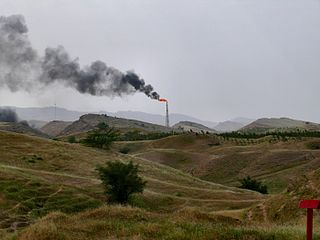
Environmental issues in Iran include, especially in urban areas, vehicle emissions, refinery operations, and industrial effluents which contribute to poor air quality. A report by the United Nations Environment Programme ranked Iran at 117th place among 133 countries in terms of environmental indexes. Water scarcity is a serious issue, and the country is also threatened by climate change.
Environmental issues in Pakistan include air pollution, water pollution, noise pollution, climate change, pesticide misuse, soil erosion, natural disasters, desertification and flooding. According to the 2020 edition of the environmental performance index (EPI) ranking released by Yale Center for Environmental Law & Policy, Pakistan ranks 142 with an EPI score of 33.1, an increase of 6.1 over a 10-year period. It ranked 180 in terms of air quality. The climatic changes and global warming are the most alarming issues risking millions of lives across the country. The major reasons of these environmental issues are carbon emissions, population explosion, and deforestation.

African environmental issues are caused by human impacts on the natural environment and affect humans and nearly all forms of life. Issues include deforestation, soil degradation, air pollution, water pollution, garbage pollution, climate change and water scarcity. These issues result in environmental conflict and are connected to broader social struggles for democracy and sovereignty.

Climate change in South Asia is having significant impacts already which are expected to intensify as global temperatures rise due to climate change. The South Asia region consists of the eight countries: Afghanistan, Pakistan, India, Nepal, Bhutan, Bangladesh, the Maldives and Sri Lanka. In the 2017 edition of Germanwatch's Climate Risk Index, Bangladesh and Pakistan ranked sixth and seventh respectively as the countries most affected by climate change in the period from 1996 to 2015, while India ranked fourth among the list of countries most affected by climate change in 2015. The Indian subcontinent is one of the most vulnerable regions globally to a number of direct and indirect effects of climate change, including sea level rise, cyclonic activity, and changes in ambient temperature and precipitation patterns. Ongoing sea level rise has already submerged several low-lying islands in the Sundarbans region, displacing thousands of people.
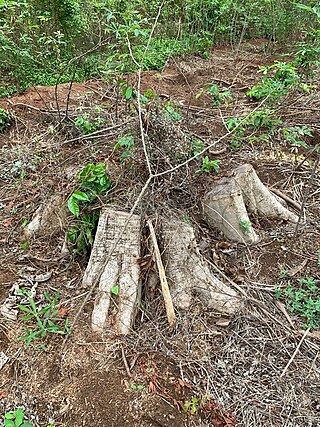
Deforestation in Nigeria refers to the extensive and rapid clearing of forests within the borders of Nigeria. This environmental issue has significant impacts on both local and global scales.

Environmental issues in Serbia include air pollution, deforestation, various categories of threat to endemic species and climate changes. Several environmental organizations operating in Serbia have protested the government's handling of these issues.

The effects of climate change on human health are increasingly well studied and quantified. Rising temperatures and changes in weather patterns are increasing the frequency and severity of heat waves, wildfires, droughts, floods, landslides, hurricanes, and other causes of injury and illness. Heat waves and extreme weather events have a big impact on health both directly and indirectly. Direct effects of exposure to high and extended temperatures include illness, reduced labour capacity for outdoor workers, and heat-related mortality.
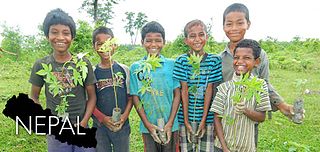
Globally, Nepal is ranked fourth in terms of vulnerability to climate change. Floods spread across the foothills of the Himalayas and bring landslides, leaving tens of thousands of houses and vast areas of farmland and roads destroyed. In the 2020 edition of Germanwatch's Climate Risk Index, it was judged to be the ninth hardest-hit nation by climate calamities during the period 1999 to 2018. Nepal is a least developed country, with 28.6 percent of the population living in multidimensional poverty. Analysis of trends from 1971 to 2014 by the Department of Hydrology and Meteorology (DHM) shows that the average annual maximum temperature has been increasing by 0.056 °C per year. Precipitation extremes are found to be increasing. A national-level survey on the perception-based survey on climate change reported that locals accurately perceived the shifts in temperature but their perceptions of precipitation change did not converge with the instrumental records. Data reveals that more than 80 percent of property loss due to disasters is attributable to climate hazards, particularly water-related events such as floods, landslides and glacial lake outburst floods (GLOFs).

The environment of North Korea comprises the diverse ecosystems of the part of the Korean peninsula controlled by the Democratic People's Republic of Korea. This includes alpine, forest, farmland, freshwater, and marine ecosystems.
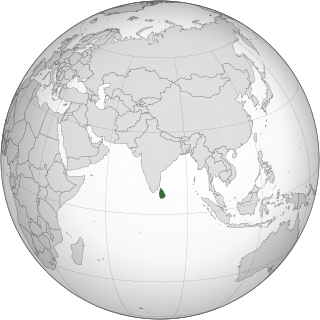
Environmental issues in Sri Lanka include large-scale logging of forests and degradation of mangroves, coral reefs and soil. Air pollution and water pollution are challenges for Sri Lanka since both cause negative health impacts. Overfishing and insufficient waste management, especially in rural areas, leads to environmental pollution. Sri Lanka is also vulnerable to climate change impacts such as extreme weather events and sea level rise.

There are many pressing environmental issues in Mongolia that are detrimental to both human and environmental wellness. These problems have arisen in part due to natural factors, but increasingly because of human actions. One of these issues is climate change, which will be responsible for an increase in desertification, natural disasters, and land degradation. Another is deforestation, which is expanding due to human recklessness, pests, disease, and fires. Mongolian lands are becoming more arid through desertification, a process that is being exacerbated due to irresponsible land use. Additionally, more and more species are disappearing and at risk for extinction. Moreover, especially in population centers, Mongolians deal with air and water pollution caused by industrialization.

Bangladesh, with an area of 147,570 km2, features a flood plain landscape and several river systems throughout the country. This landscape provides the major natural resources of water, land, fisheries, forests, and wildlife. The country currently faces several environmental issues which threaten these resources, including groundwater metal contamination, increased groundwater salinity, cyclones and flooding, and sedimentation and changing patterns of stream flow due to watershed mismanagement. Some of these, such as the changing patterns of stream flow and presence of lead in groundwater, can be directly correlated with human activity and industrial processes, while others, such as cyclones and flooding are naturally occurring issues.
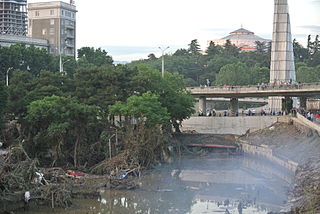
Situated in the South Caucasus Region bordered by the Black Sea to the West, the Russian Federation to the North, Azerbaijan to the East, Turkey to the Southwest, and Armenia to the South, Georgia is a small country supplied with profitable natural resources, heavenly scenes, copious water assets, rich living spaces, and ecosystems that are of local and worldwide significance.

Due to its geographical and natural diversity, Indonesia is one of the countries most susceptible to the impacts of climate change. This is supported by the fact that Jakarta has been listed as the world's most vulnerable city, regarding climate change. It is also a major contributor as of the countries that has contributed most to greenhouse gas emissions due to its high rate of deforestation and reliance on coal power.
Environmental issues in Myanmar include air pollution, water pollution, deforestation, and issues relating to climate change. Myanmar is a country with a high percentage of forest covering and is said to have the most forest cover remaining in a Southeast Asia country. At the same time, it also has a rapid deforestation rate of over 2 percent of total forest area annually. Air pollution is another environmental concern for Myanmar. Data collected up to 2019 shows that 24,000 deaths of the annual toll of the country were caused by air pollution and particulate matter pollution in the country had caused moderate risks against human health. Myanmar people from both rural and urban areas face water pollution which is caused mainly by agriculture, mining activities and discharge of wastewater into water bodies without any treatment. Moreover, Myanmar has frequently experienced natural disasters that are the result of climate change. It also suffers from global warming which results in temperature rising and drought.




















